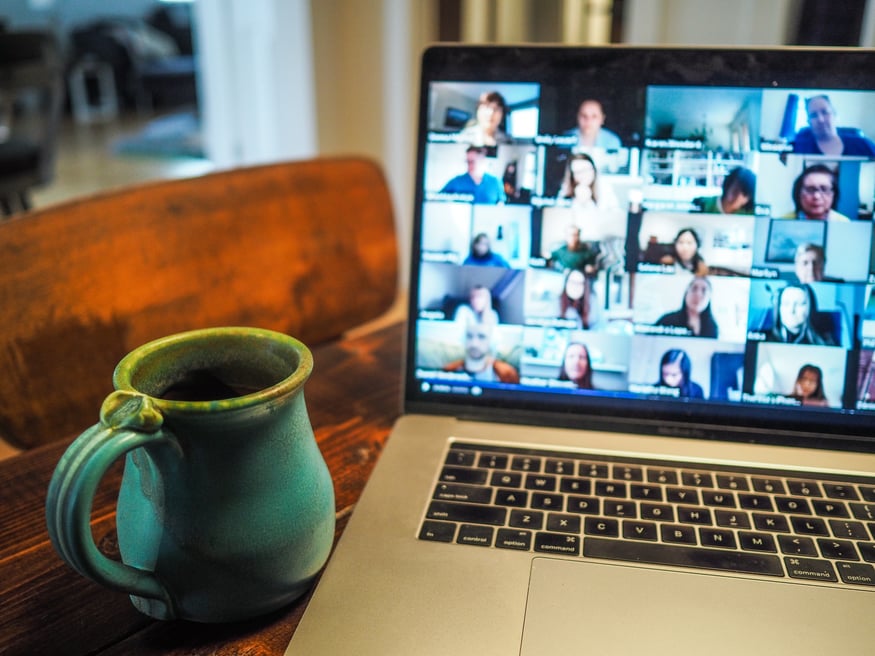Kay Van Slooten
Reimagining the Future of Employee Experiences
As business leaders make plans for the return to the office, they’re adjusting to some of the permanent shifts the pandemic has left us: it’s out with closed cubicles and small personal desks and in open collaborative spaces and touchless coffee machines. However, it’s not just physical spaces that need a rethink, but the big intangible: organizational culture. Across sectors, CEOs and executives are grappling with tough questions:
- What has over a year’s worth of remote working done to our organizational culture?
- How do we reinvigorate our culture in ways that ensure emotional and social connections are not lost?
- How significant is the link between weakened organizational culture and consistent, high levels of turnover?
- How do we envelop new employees in our culture so they quickly feel as though they belong?

In a remote environment, and shortly in a hybrid environment, we need to reimagine how we look at, and think about, culture. Many business leaders have commented that it’s clearly no longer about ping-pong tables, on-site gyms, and other physical attributes. Let’s be honest—it never really was. Of course, such perks play a role in enhancing the employee experience but they’re not the lifeblood of your organization.
Culture is about shared beliefs, values, ways of interacting with each other, and building strong and lasting bonds between employees at every level in pursuit of a common goal. Now more than ever, what an organization stands for—its lifeblood, its culture— needs to permeate every touchpoint along the employee journey. Whether I’m performing my tasks, attending a training program, receiving recognition, or engaging in social activities, that culture needs to be continually reinforced in tangible, meaningful, brand-aligned, and authentic ways.
Throughout this pandemic, organizations have tried a variety of ways to keep their cultures alive and well, from holding virtual yoga classes and cocktail hours, to sending employees care packages or food delivery. While their efforts were well-intentioned, organizations were largely reacting in the moment with a certain amount of throwing spaghetti at the wall and seeing what stuck.
Now, as we face the new future of work where 77% of employees now prefer a hybrid, or flexible setup, we need to be proactive and purposeful in how we reimagine that employee journey end-to-end as the underpinning of organizational culture. The benefits of a strong and positive culture that can thrive in a hybrid environment are numerous, from talent acquisition and enhanced productivity to heightened engagement and talent retention.
This work is not easy, as it requires dispelling decades of norms and established practices to meet the expectations of employees that have been fundamentally changed due to the pandemic. However, organizations that accept the challenge will find themselves differentiated in ways that will be hard to replicate.

So, how do you do that? By engaging your employees in the co-creation of the future employee experience in a way that is meaningful, relevant, and customized to them.
6 Steps to Compelling Employee Experiences in a Hybrid Environment
1. Segment your employee base into personas, just as you’ve been doing for years with your customers—understand their motivators, what’s important to them, and how they want their relationship with work to look.
2. Hear directly from your employees, based on the aforementioned segmentation, in employee co-creation sessions. Unpack the current experience within the context of COVID-19 work environments and co-create a more ideal future state experience with a hybrid work environment in mind.
3. Identify actions to be considered, taking into account the importance of each touchpoint in the employee journey so that strategies and tactics can be prioritized based on perceived impact.
4. Validate your findings with the broader organization before making any investment decisions.
5. Develop an Implementation Blueprint, including change management strategy, to drive the execution of the strategies and actions identified.
6. Create a compelling, brand-aligned Employee Value Proposition that acts as an anchor for the entire employee experience.
Given the disruption in the workplace, it truly has never been more important to engage and retain employees. Though adapting to the new world of work is challenging, it’s also a rare opportunity to reimagine your organizational culture. Seize it.